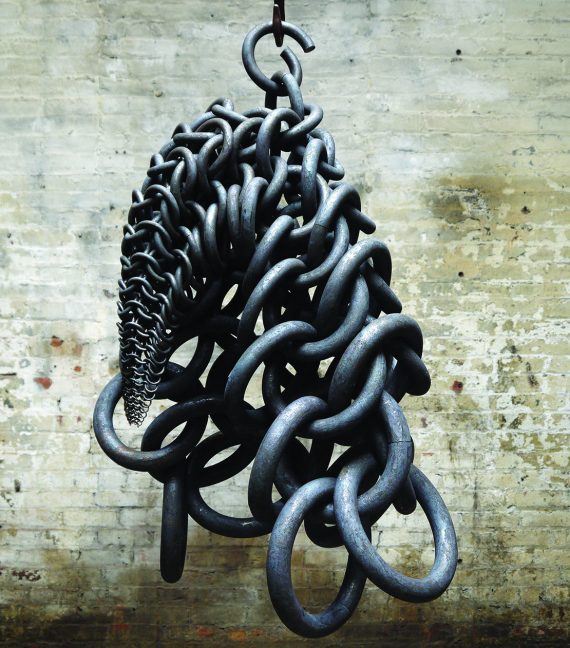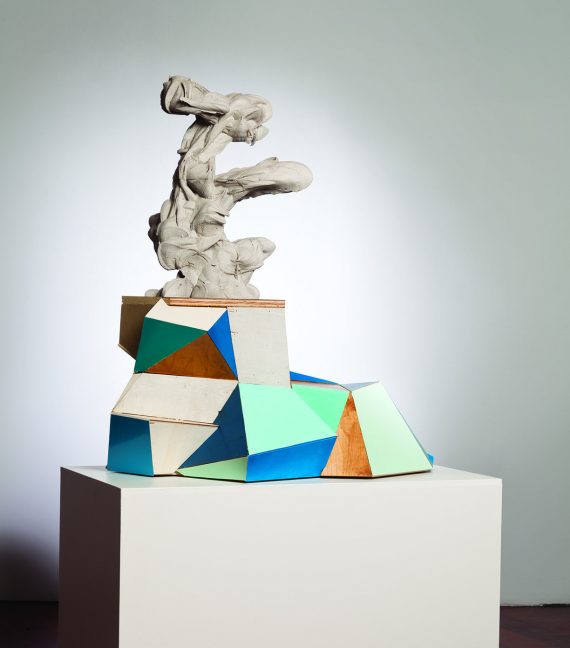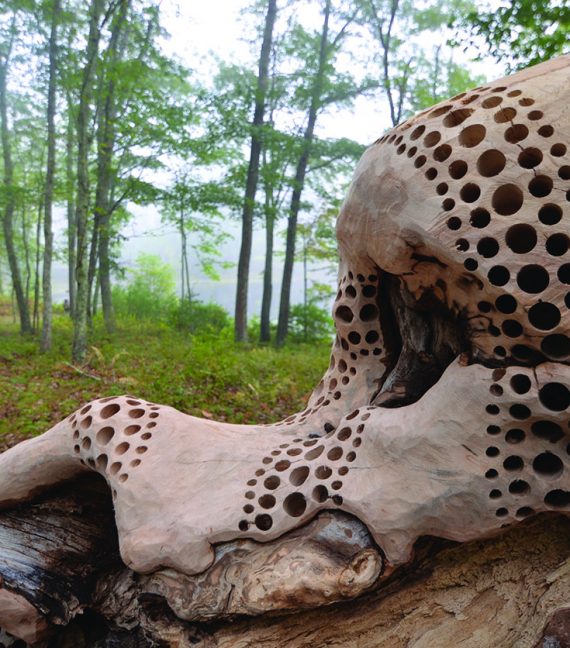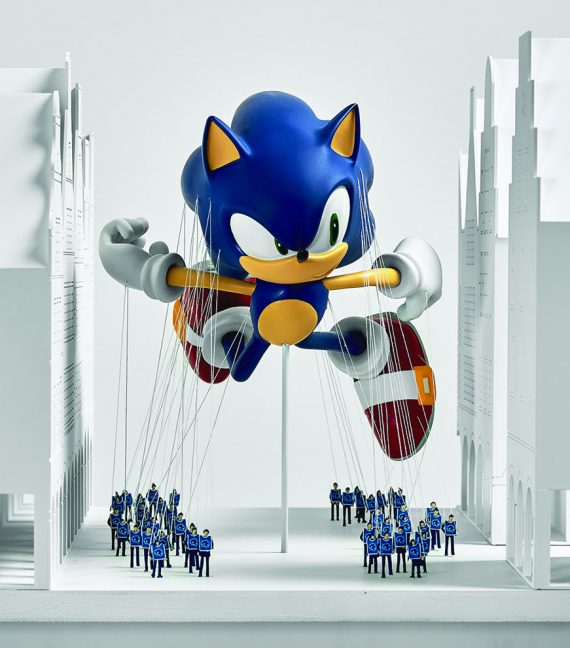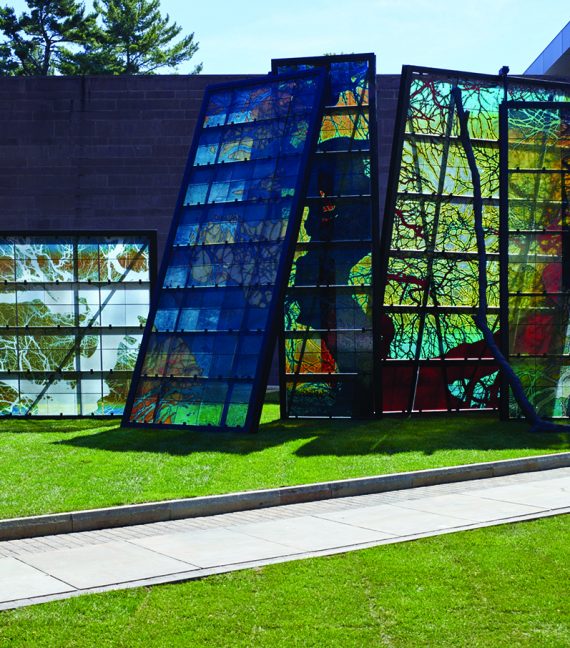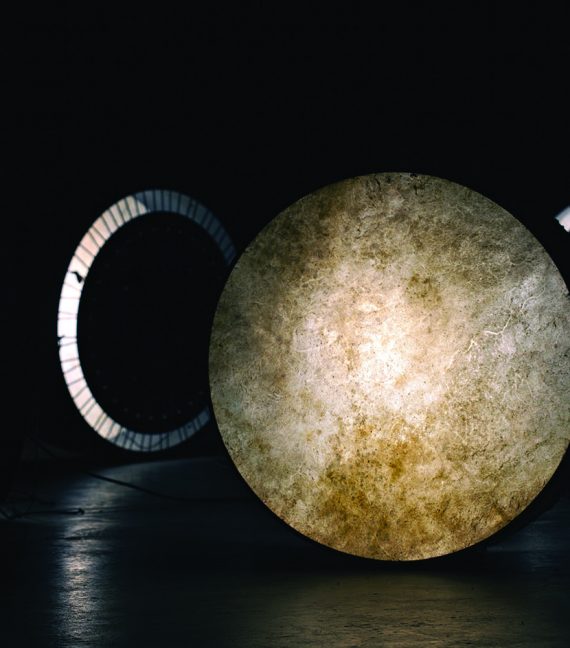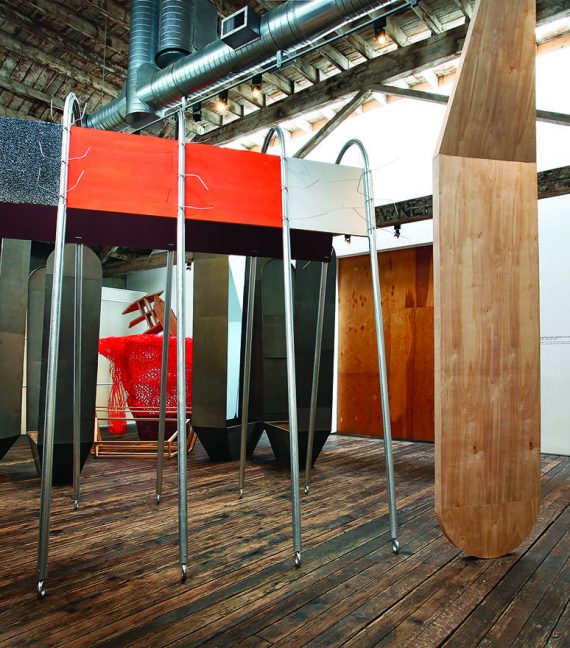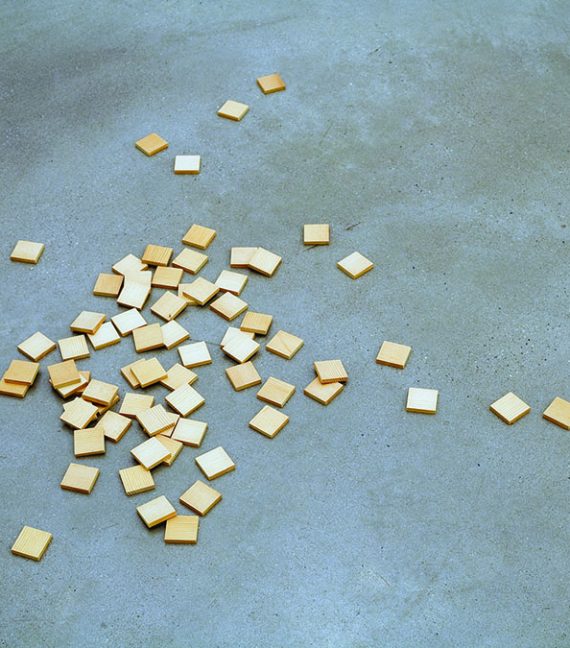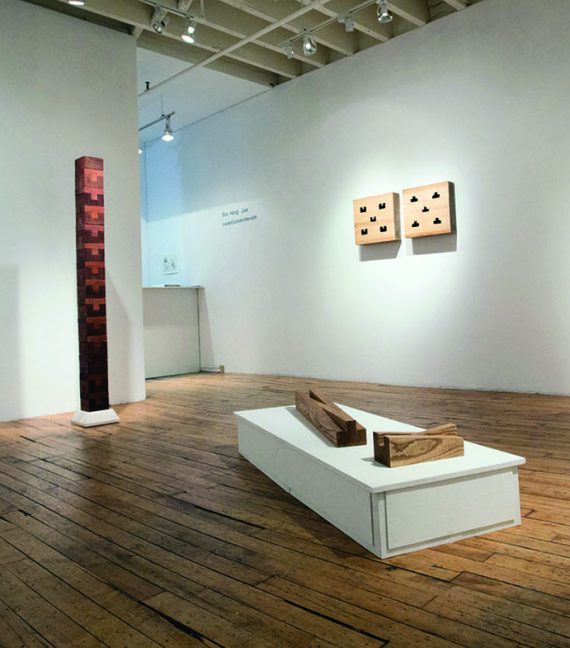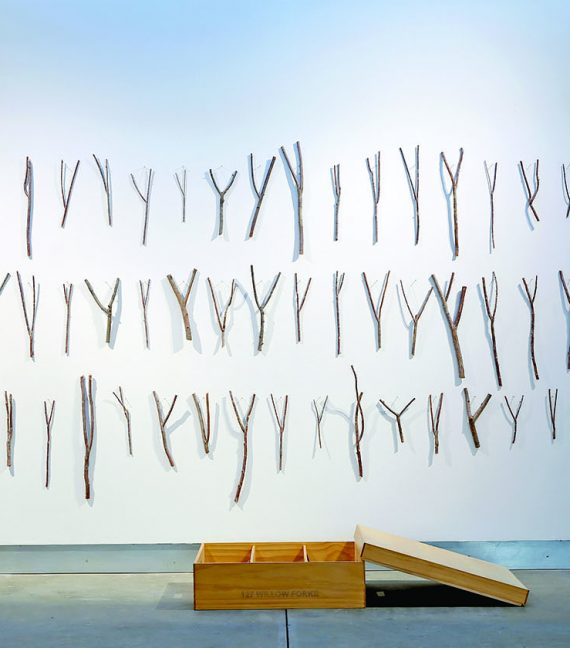NEW YORK Lori Bookstein Fine Art John Crawford, a Brooklyn-based artist whose output consists of welded steel sculptures, spent 10 years (1976–86) in Tuscany working at a blacksmith’s shop after graduating from the Rhode Island School of Design. Since 1995, he has been interested in the smithing works of various West African cultures. As a result of these models, his work is highly tactile, abstract, and often totemic. Abstract steel sculpture has a long, illustrious history in the U.S., but Crawford’s vision is quite different. He borrows from the forms of other places to create work that openly relates to its making, as well as to the history of American creativity.
Christopher Frost
BOSTON Boston Sculptors Gallery Chinese scholar’s rocks are hunks of stone sculpted by nature into bizarre and visually interesting shapes. Pitted, eroded, and wrinkled, they evoke landscapes, waves, mountain peaks, sometimes human and animal figures. In Asia, they are mounted on individually designed bases as objects of contemplation and inspiration. Boston sculptor Christopher Frost, fascinated by such “viewing stones,” received an alumni grant from the School of the Museum of Fine Arts to travel to China and seek them out on their home turf.
“Ephemeral Art in the Landscape”
EAST HADDAM, CONNECTICUT I-Park I-Park’s fifth Environmental Art Biennale, “Ephemeral Art in the Landscape,” featured site-specific, outdoor installations by 12 artists-in-residence from the U.S. and Europe, who presented their works in a culminating, one-day happening. Guided walking tours allowed the public to experience the projects amid the park’s immersive natural setting. Unique in New England, I-Park functions as a conceptual drawing board where artists can experiment without a specific result in mind, and public access is limited to protect the artists’ privacy as they work.
Isa Genzken
BONN, GERMANY Bundeskunsthalle Visitors to the last Venice Biennale might recall Isa Genzken’s 23 models for outdoor sculptures, which appeared in the main pavilion. If not, this probably has more to do with curator Okwui Enwezor’s incomprehensible decision to present them with, of all things, Walker Evans’s legendary photo series “Let us now praise famous men” than with the sculptures themselves. The models were recently shown again in Bonn, with 12 new additions; together, these 35 works document Genzken’s public projects from 1986 to the present. The exhibition, however, offered far more than mere documentation.
Doug & Mike Starn
PRINCETON, NJ Princeton University Art Museum Standing nearly 18 feet tall and weighing eight tons, Doug and Mike Starn’s luminous outdoor installation (Any) Body Oddly Propped continues their preoccupation with dendritic growth and sunlight, while adding a weightiness not previously seen in their work. Seven tremendous steel frames hold vividly colored glass panels etched with silhouettes of tree branches that form networks akin to veins or synapses. The massive rectangles, like deconstructed architecture, are propped diagonally against one another; two are held up (or rather seem to be) by spindly cast-bronze tree limbs.
Raul Keller
HELSINKI SIC Galleria Raul Keller’s artistic trajectory cuts through the realms of sound art, video, photography, live performance, and installation. For his gallery and museum exhibitions, he often brings in elements from several of these spheres to create site-specific installations that immerse the viewer in sonic environments. In recent years, his explorations have tended to use a specific range of sound devices—typically, membrane speakers, trampolines in various shapes and sizes, and parabolic dishes, which he presents in diverse arrangements. At times, colored light imparts an additional aura of drama, mystery, or wonder.
Joan Tanner
SEATTLE Suyama Space Huddled in impromptu groups, excluding passage in some directions and open to being traversed in others, Joan Tanner’s recent multi- part installation seemed to lumber, stride, and even careen through space. Continuing her distinctive arrays of curiously awkward and yet oddly familiar forms, The False Spectator could be characterized as off-the-cuff, extemporized, or makeshift. Yet Tanner’s installations exude an air of compositional determination even as they appear to head in several different directions simultaneously—a polysemantic strategy that makes seeing them in person a pleasurable experience and retelling them in text a daunting task.
“The Xerox Box”
NEW YORK Paula Cooper Gallery Conceptual art, which came into being during the mid-1960s in the cold-water flats and raw-space warehouses that spread through Lower Manhattan, was anything but an elitist movement. Instead, it was a phenomenon largely based on the notion than art could exist in pursuit of ideas rather than preconceived object-forms laden with academic entitlement (which it later became). The conceptual aspects of the work evolved at a time when casual materials—like Xerox pages—were either secondary or integral, often integrating time or temporality as part of the idea.
Soo Hong Lee
NEW YORK Art Mora Korean sculptor Soo Hong Lee, who teaches at Hong-Ik University in Seoul, makes work out of wood—seemingly simple pieces that we in America would relate to Minimalism, but which take on the ritual simplicity of spiritual expression. Though there is no overt reference to Buddhism in his work, his efforts feel infused with that philosophy. Wood is a simple material; and Lee’s pieces possess an honesty that relates them to the long tradition of wooden religious sculpture in Asia. Yet the work is relentlessly abstract, given to schematic imagery that repeats forms in negative and positive space.
Robert Kinmont
NAPA, CALIFORNIA di Rosa Robert Kinmont’s recent one-person show, “Trying to Understand Where I Grew Up,” was a mini-retrospective with works from his early years in the 1970s through pieces created as recently last year. Kinmont, one of the California Conceptualists, rose to prominence in the ’70s, then dropped out of the art world in the ’80s and, for about 20 years, studied Buddhism and made his living as a carpenter. Around 2000, he returned to making sculpture, and he still lives and works in Sonoma, California—an important factor for work that explores the peculiarities of place and the human relationship with nature.




